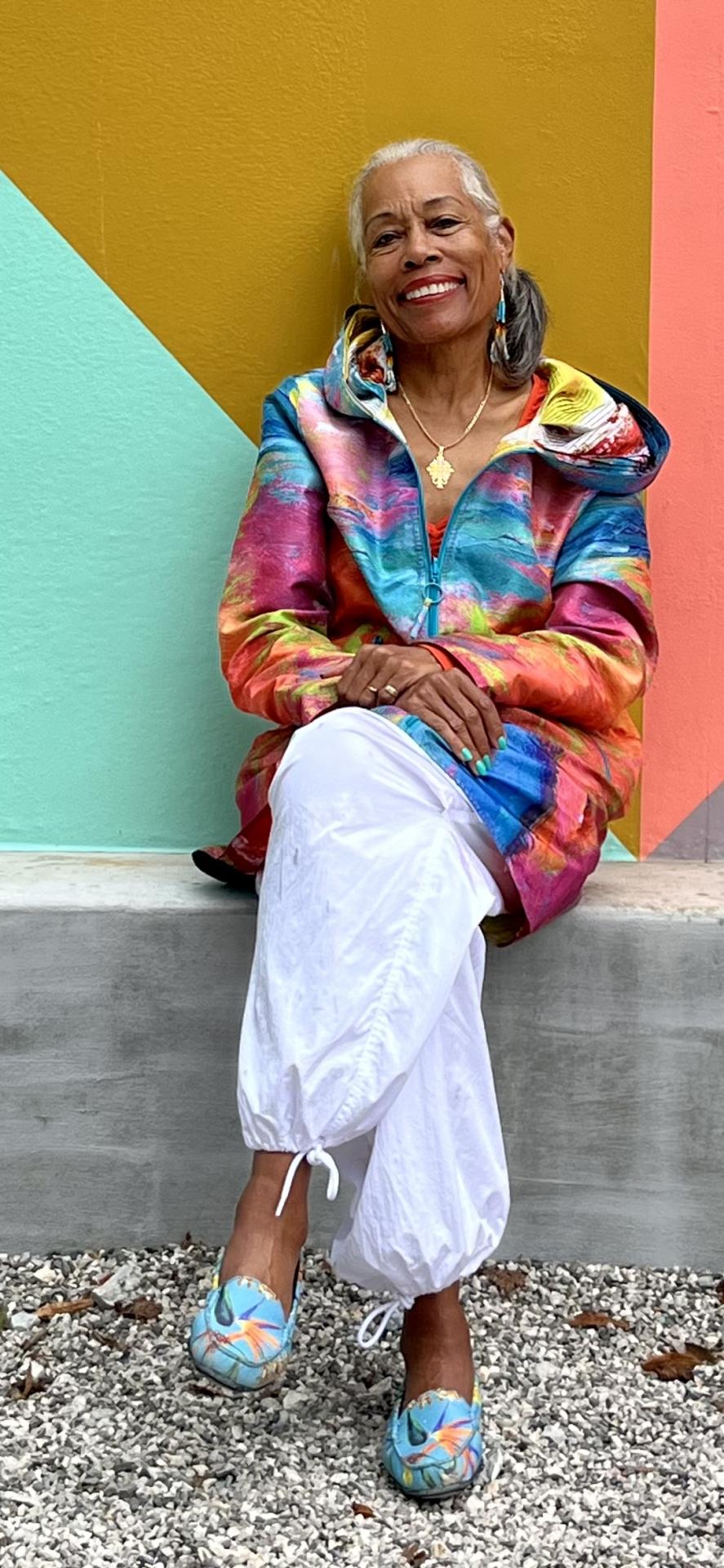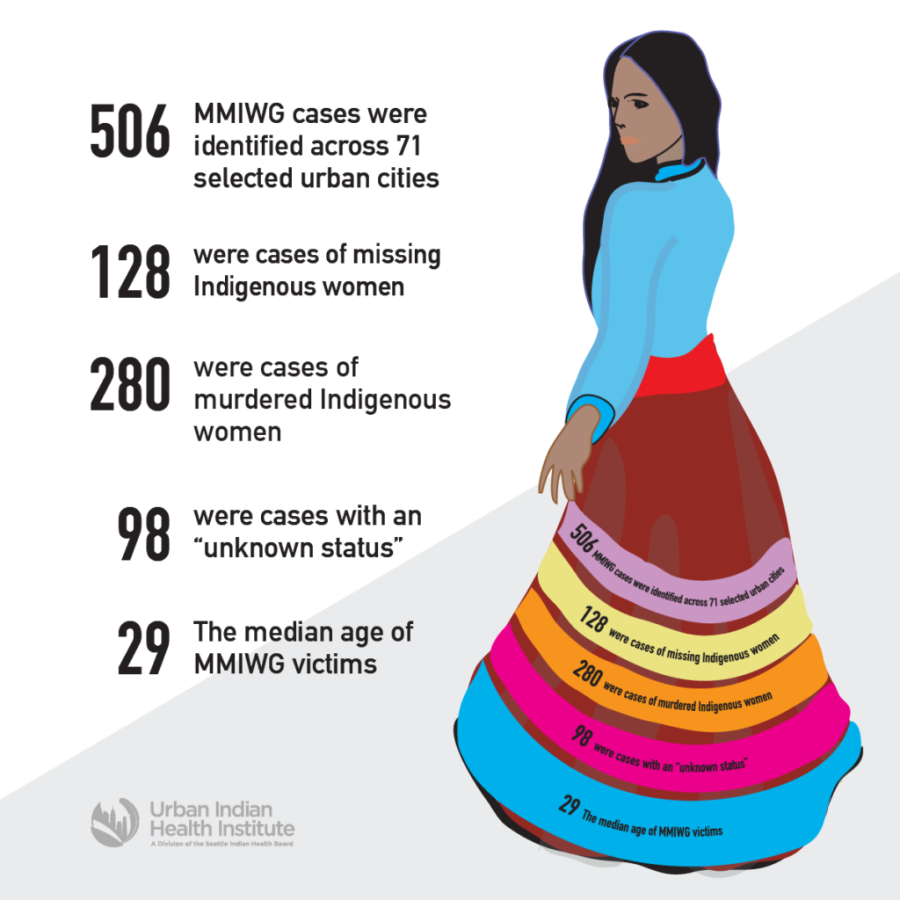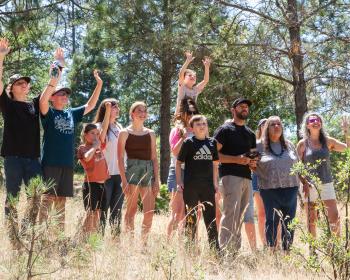
By Phoebe Farris (Powhatan-Pamunkey)
Jeffrey Gibson’s (Mississippi Band of Choctaw Indians and Cherokee descent) position as the first Native American artist to represent the United States at the 60th Venice Biennale Arte exhibition, on now through November 24, 2024, has sparked great buzz and excitement among Native Americans and Indigenous Peoples elsewhere around the world. The pride and joy are felt beyond those involved in the arts. Not knowing Jeffrey Gibson personally, I wonder how he copes with the enormous attention, his responsibility as a cultural worker, and the navigating of the international art world as well as the expectations from Native American artists here in Turtle Island; in essence, the pressures to interact positively with all the different constituencies inside and outside the art establishment.
The title of Gibson’s installation, “the space in which to place me,” is a phrase that resonates with many Indigenous Peoples due to a legacy of historical displacement and removals, treaty violations—both historic and present—and the resilience required to maintain sacred spaces. The title also alludes to the literary space as a reference to Oglala Lakota poet Layli Soldier’s work, “He Sapa.”
Although art exhibitions primarily emphasize the visual art forms, the titles of these works can be equally important. This is especially true in analyzing Gibson’s art. Some of his titles are references to song lyrics, such as “Birds Flying High You Know How I Feel” and “I’m A Natural Man.” Others of Gibson’s titles incorporate historical and literary references, such as “We Want To Be Free,” “We Are Made By History,” “If You Want To Lift Yourself Up Lift Someone Else,” “Give My Life Something Extra,” and “The Great Spirit Is In All Things,” just to name a few.
Kathleen Ash-Milby (Navajo) is the U.S. Pavillion Commissioner and curator of Gibson’s exhibition. She is the first Native American to organize a U.S. Pavillion. The other exhibition curator is Abigail Winograd. Other Indigenous artists from around the globe and here in Turtle Island, including Kay WalkingStick (Cherokee Nation of Oklahoma) and Emma Whitehorse (Navajo) are also participating in the Biennale Arte’s main exhibition.
During the two days I visited the installation, most of the comments and reactions I overheard inside the galleries and outside on the building’s exterior centered on the vivid, bold reds and the other bright colors of the paintings and sculptures. Being surrounded by so much color was like being enveloped in a rainbow. It’s not often that serious subjects like colonialism, racism, religious freedom, sexual orientation, and freedom of speech are visually expressed using bright colors. Gibson is unique in his ability to confront viewers with these issues while still creating a space for optimism.
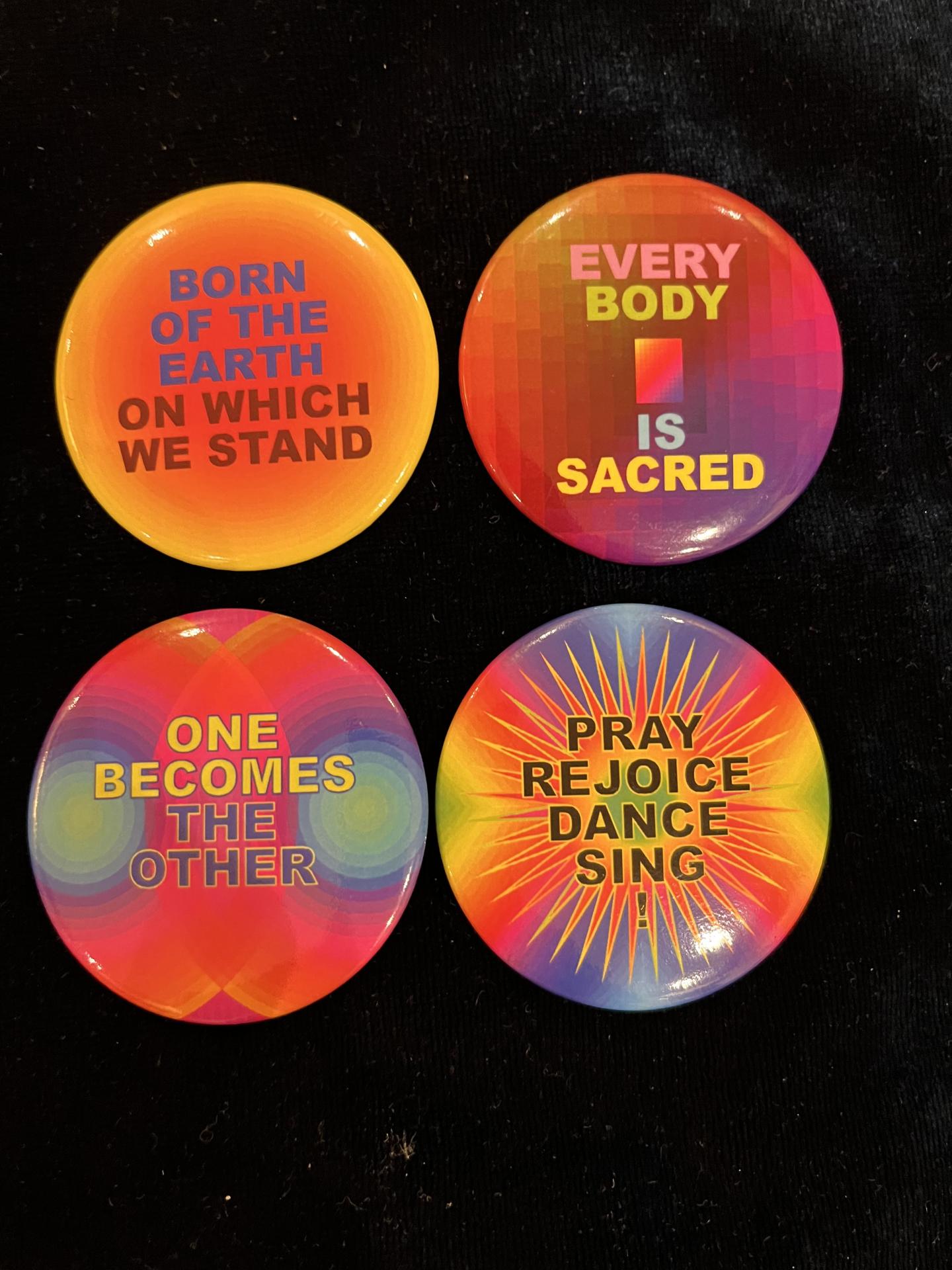
Another unique element of the exhibition was Gibson’s gift of buttons, available for visitors near the front entrance. The four titles to select from were: “Born Of The Earth On Which We Stand,” “Every Body Is Sacred,” “One Becomes The Other,” and “Pray Rejoice Dance Sing.” These words are references to themes reflected throughout the exhibition.
Since 2024 is a presidential election year for the United States, the significance of the historical events highlighted in some of Gibson’s sculptures and paintings is a good starting point. Two 10-foot-high sculptures in the first gallery, “The Enforcer” (2024) and “We Want To Be Free” (2024), are constructed of beads, ribbon, fringe, tin jingles, and glazed ceramic. “The Enforcer” references the 13th, 14th, and 15th Amendments of the U.S. Constitution, commonly referred to as “Reconstruction Amendments,” which abolished slavery and were supposed to protect the civil rights of formerly enslaved citizens.
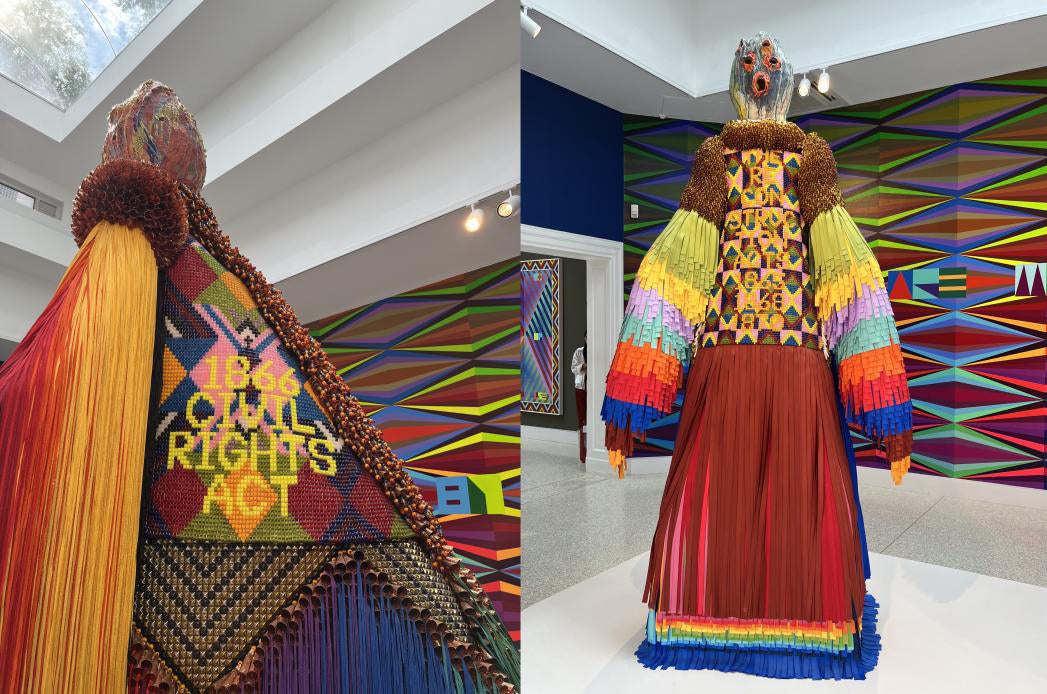
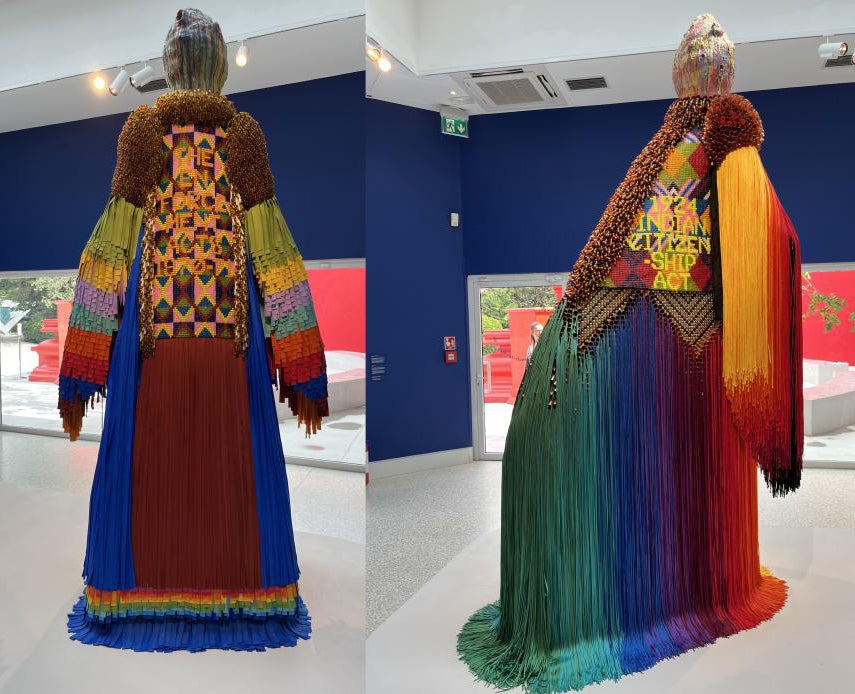
The Enforcement Act of 1870 established penalties for interfering with voting rights. The Indian Citizenship Act of 1924 is referenced in the work “We Want To Be Free,” as well as the Civil Rights Act of 1866. Gibson’s sculptures about these 19th and 20th-century civil rights laws are exceptionally poignant in 2024, since many people of color are now once again being denied the right to vote or do not have polling centers near their homes, especially on Indian reservations. The civil rights theme is also reflected on a mural in the same gallery titled, “We are made by history,” a phrase used by Dr. Martin Luther King in 1954.
Along with towering, heavily beaded sculptures, some of Gibson’s works are smaller, more intimate busts on pedestals, such as “Treat Me Right” (2024). The beaded female figure has two small buttons on her chest with the words ‘TREAT ME RIGHT’ and ‘WOMAN POWER.’ Made of glass beads, nylon fringe, tin jingles, metal balls, plastic bone pipe beads, steel, nylon thread, and acrylic thread, the figure could be of any race or nationality; the variety of cultural hairstyles, skin colors, and clothing are a mixed hybrid of fluidity.
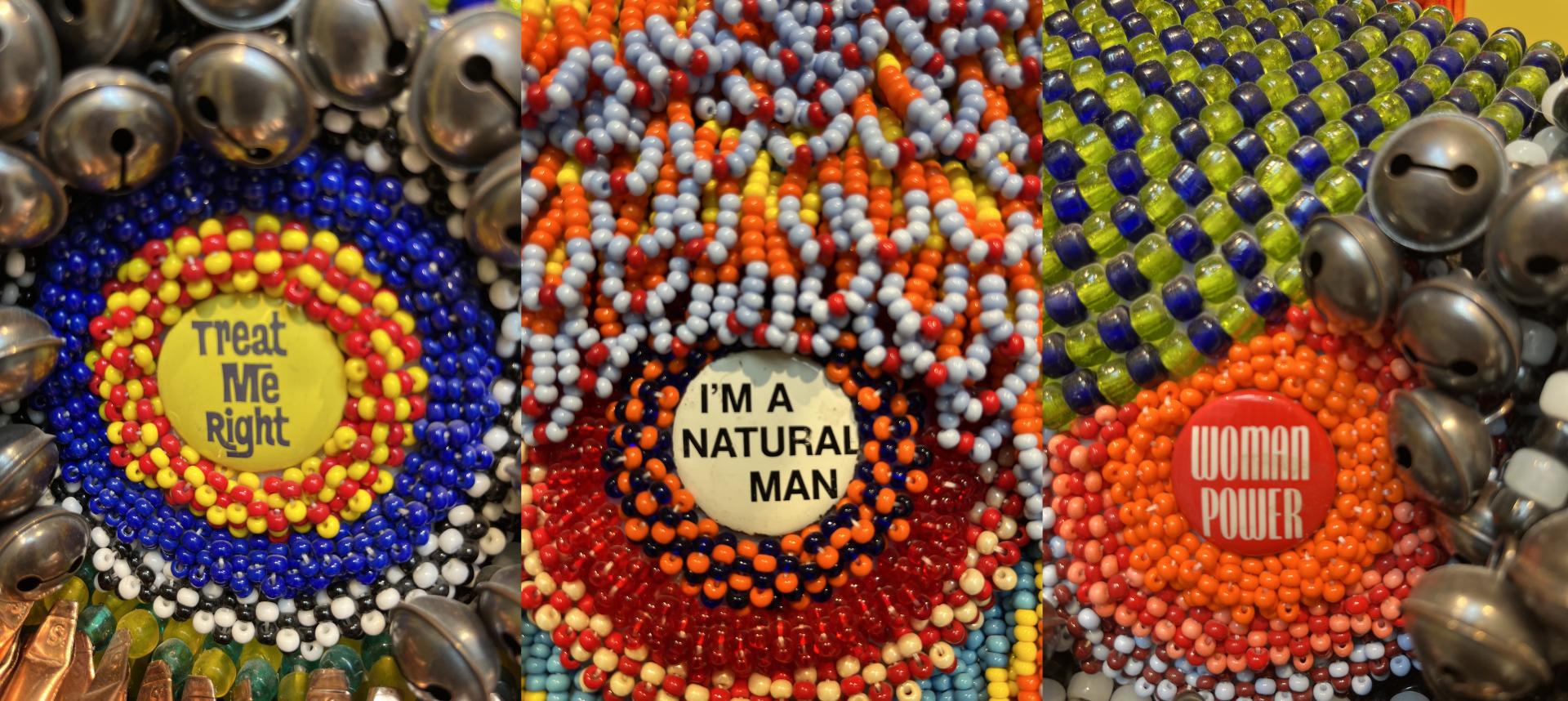
This fluidity is also evident in the similarly sized sculpture, “I’m A Natural Man” (2024), made with some of the same materials. The long, flowing red hair, which some westerners may associate with a female figure, in this case highlights the long hair worn by Native American men and boys that was forcibly cut short during Indian boarding school confinement. These two sculptures question what it means to be a ‘natural man,’ or a ‘natural woman,’ as expressed in Carole King’s “(You Make Me Feel Like) A Natural Woman,” popularized by Aretha Franklin.
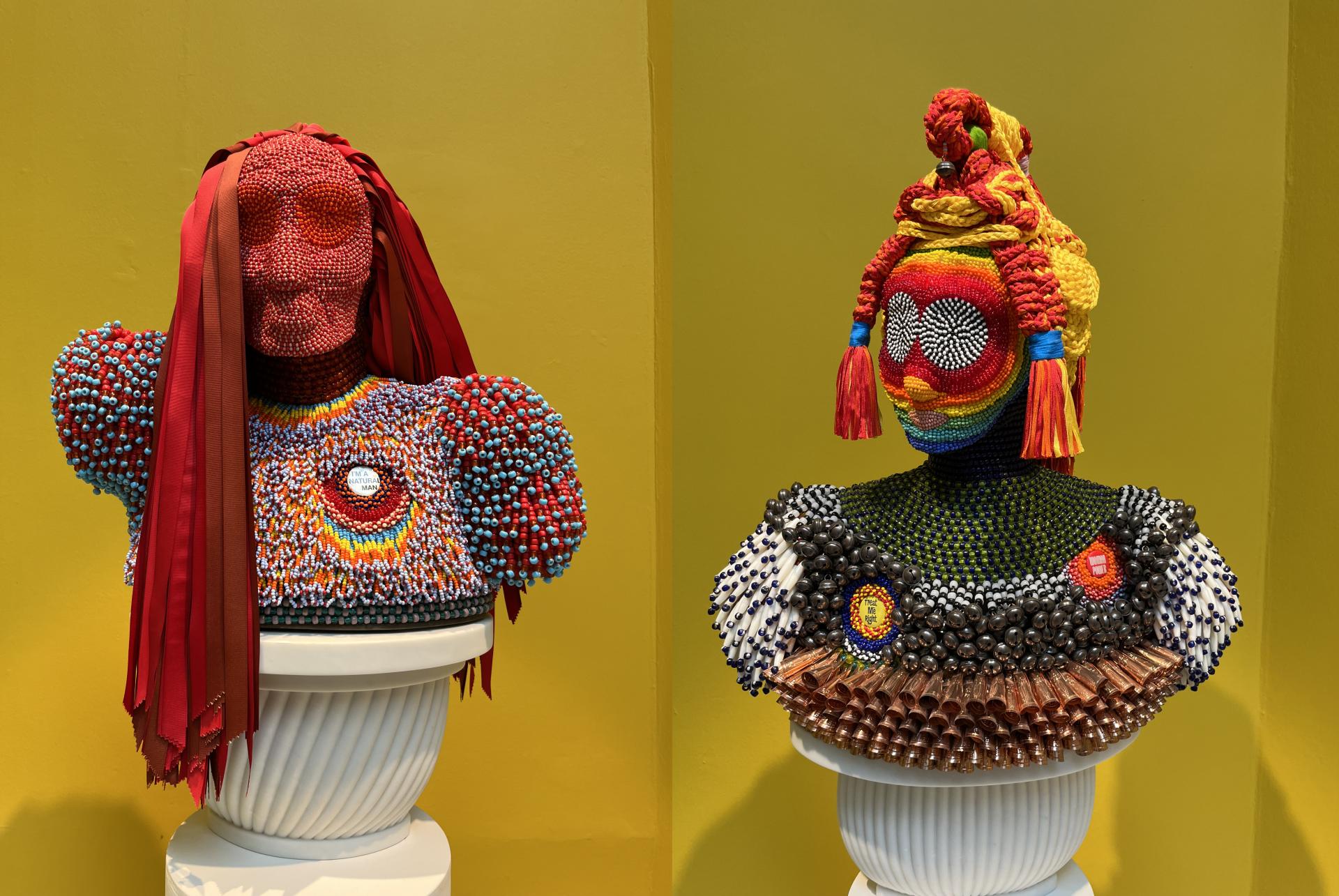
Gibson’s show is a multimedia experience. The last gallery space includes a video installation, “She Never Dances Alone,” featuring Sarah Ortegon HighWalking (Eastern Shoshone and Northern Arapaho) performing a Jingle Dress Dance to music by The Halluci Nation, a Canadian First Nations electronic music group. Images of the dancer’s face, feet, and entire body are multiplied across several screens, representing Indigenous women across generations. Closing the exhibition with upbeat music and dance reminds us to keep moving and not be static in the face of injustice, to be energetic, and to bring others along with us—for dance is a communal activity, and community is at the heart of Indigenous cultures.

--Phoebe Mills Farris, Ph.D. (Powhatan-Pamunkey) is a Purdue University Professor emerita, photographer, and freelance art critic.
